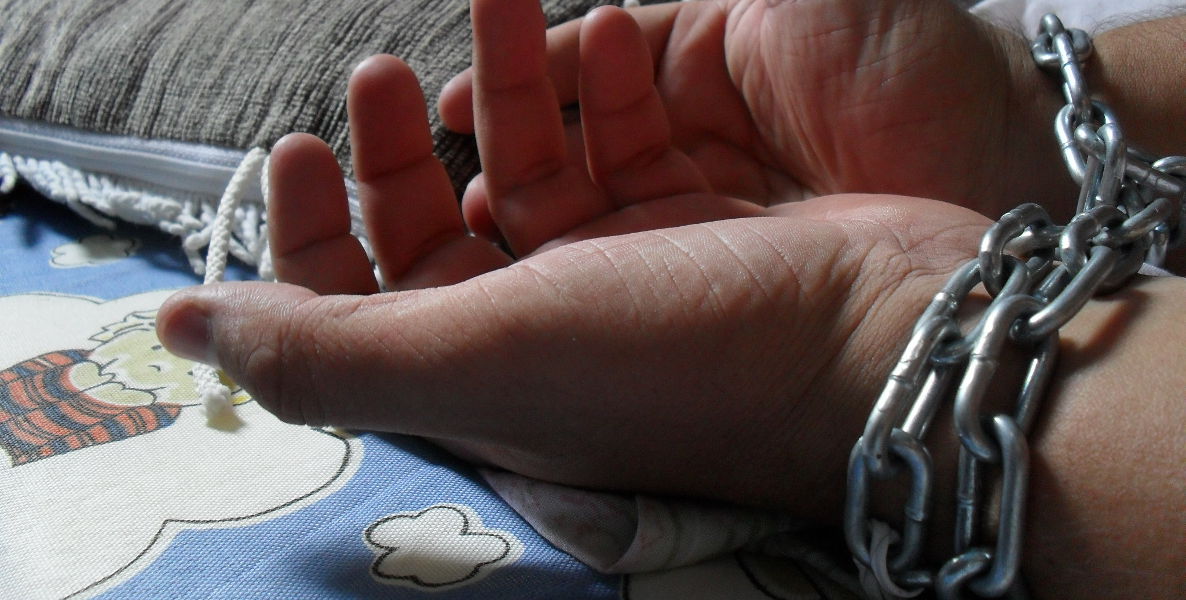Philadelphia has a proud anti-slavery history. But slavery is not only a historical legacy, it’s also a 21st century industry.
We do not have to look hard to find it, but we have to look. Change is always first about making what is seemingly invisible…visible. Trafficking is no different. Not really seeing or wanting to see is why it’s important that January is Human Trafficking Awareness Month.
Where can we see it?
Trafficking exists in massage parlors that trade in prostitution with women smuggled from other countries, women directly sold or deceived. Those women are driven from site to site and from city to city, through increasingly sophisticated crime syndicates.
Trafficking is advertised in classifieds on the Internet and alternative weeklies. Some of those girls (and boys) were first homeless, sometimes drug addicts and often pimped by men that groomed them when they were desperate. Seemingly progressive papers often relied on revenue based on ads that sometimes supported human trafficking and certainly degraded women. Not so progressive after all.
We’ve taken on this issue before. African Americans in 18th and 19th century Philadelphia organized and fought against slavery at every opportunity. As did so many other Philadelphians.
Trafficking appears in other work settings, too. There have been trafficking cases involving nail salons, office cleaners and nannies in the Philadelphia area.
Trafficking victims include people of both genders and all ages, and sexual exploitation is only one form of the crime.
Trafficking often appears in the goods we buy: from chocolate to textiles to electronics. This is where it is hardest to see, at the point of sale. We can use consumer power to regulate labor practices globally but endless outsourcing makes it hard to manage compliance.
The U.S. State Department publishes a slavery product list from around the world, identifying nations and products linked to forced labor. Still it is hard to navigate our slave footprint.
But we’ve taken on this issue before. African Americans in 18th and 19th century Philadelphia organized and fought against slavery at every opportunity. As did so many other Philadelphians.
Our city was home to a good number of prominent abolitionist organizations. The Philadelphia Society of Friends (Quakers) banned investments in the slave trade in 1758. The American Anti-Slavery Society had its founding convention in Philadelphia in 1833. That same year, the American Female Anti-Slavery Society was founded, one of the only integrated abolition organizations in the nation. (Yes, even anti-abolition organizations were segregated by race and gender.)
Today, there are at least 21 million slaves in the world, including debt slaves and chattel slaves, as well as those forced into domestic labor and sex trafficking. Some place the number much higher—as high as 27 million—but there is no way to know. Often the line between abuse and slavery is hard to define.
Debt slavery is the most widespread of all contemporary slaveries. A poor person in some country owes a landowner or business owner a debt that cannot be repaid and the loan is converted into forced labor for the family. It often devolves into an inter-generational inheritance. This occurs throughout the poorest rural areas of India, Pakistan, Nepal, Bangladesh, as well as parts of Africa and Latin America. The slavery-based brick kilns of rural India are one of the most prominent examples.
While chattel slavery is officially banned everywhere, there are instances of its routine practice, particularly in nations with an entrenched history of slavery: Sudan, Mauritania, and the Gulf States (where domestics are often converted into slaves). The official legal ban did not take place in Mauritania until 2007 and the Gulf oil states banned slavery gradually, from the 1950’s until Oman’s ban in 1970.
In the United States, the human trafficking story is bound up with so many other stories: undocumented immigration, the drug trade, domestic and child abuse, prostitution, and poverty. The trafficking narrative has trouble reaching into our homes because it is so often hidden within those other stories.
Increased civil conflict and mass labor migration bring about an increase in slavery. Civil wars in Sudan and the Congo brought new waves of slavery, as did the breakdown of social order in Liberia during its recent civil war. And in Iraq and Syria, where ISIS has taken control of large areas, there are widespread examples of enslavement, particularly of Yazidi women and children.
Domestic slavery, including forcing women to marry as young girls and forcing children to labor illegally, is widespread. Haiti—the only nation in the world that emerged as a result of a successful slave revolt—is one of the worst offenders of childhood slavery. The restavec custom where the children of the poor are sent to households of wealthier Haitians has resulted in as many as 200,000 children in servitude today.
And then there is the sexual trafficking of women and children with large numbers coming from Eastern Europe, Asia, and Latin America. This has gotten the most press and attention from movies, documentaries, and broadcast news over the past decade. CNN’s Freedom Project is the most prominent broadcast journalism example of anti-slavery work.
What are the numbers on annual human sales in the sex trafficking trade? Nobody knows for certain, but some estimates place the number of people sold commercially at more than a million per year. It is among the fastest growing global crimes, more profitable in some instances than drug sales and certainly more profitable than most global companies.
In Colombia, a popular television series called La Promesa (The Promise) hit the airwaves in 2013 and has been picked up in other Latin American countries (you can get it on Netflix). It is the soap opera-like story of three women duped into sexual trafficking. The show will not win awards for great drama but it powerfully shows ordinary people the narrow line between the life they are living—and being sold. And that is the point: Recognizing yourself in the lives of those being sold.
We can ask local law enforcement to investigate trafficking in a more systematic way. Why not break up trafficking rings the way we break up drug rings?
In the United States, the human trafficking story is bound up with so many other stories: undocumented immigration, the drug trade, domestic and child abuse, prostitution, and poverty. The trafficking narrative has trouble reaching into our homes because it is so often hidden within those other stories.
How can we fight it?
- We can support those extraordinary service organizations like Philadelphia’s Covenant House which provide beds and support for runaway children, some of whom have been trafficked, or Dawn’s Place that does the same for prostitutes, many of whom were likewise trafficked.
- We can support the efforts of anti-slavery advocacy groups locally and throughout the nation: Polaris, the American Anti-Slavery Group, the Philadelphia Anti-Trafficking Coalition, and many others.
- We can ask local law enforcement to investigate trafficking in a more systematic way. Why not break up trafficking rings the way we break up drug rings?
- Finally, we can push a foreign policy that expresses democratic values including sanctions on nations that refuse to fight trafficking and forced labor.
The State Department has actually been a global leader on this issue since 2001. In June of every year since 2001 the State Department is required to issue an annual Trafficking in Persons Report, which rates every nation on this issue. Yes, this is one instance where President Bush played a positive policy role. (AIDS in Africa was another).
But much more can be done. Some of our closest allies continue to turn their eyes away from the problem. I have heard no discussion in the Presidential debates on linking human rights and foreign policy.
Locally, let’s make Philadelphia a prominent anti-slave city in the 21st century just as it was in the 19th century. All it would require is the will to organize and take action.
Header Photo: Flickr/Imagens Evangélicas




